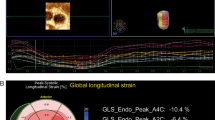Abstract
Electronic fetal heart rates (FHR) are used to monitor fetal health during labour. The paper records are visually assessed by clinicians, but automated alternatives are being developed. Interpretation, visual or computerised, depends on assigning a baseline to identify key features such as accelerations and decelerations. However, when the FHR is unstable the baseline may be unassignable, making conventional analysis unreliable. Such instability may reflect on fetal health. If true, these segments should not be discarded but quantified, for which we have developed a numerical method. In 7,568 labours, the association between unassignable baseline and umbilical arterial blood pH ≤ 7.05 at birth (evidence of poor health) was studied retrospectively. We found a consistent increase of the risk for acidaemia with longer intervals of unassignable baseline. This is detectable at the end of the first stage of labour, but stronger at the end of the second stage: in the last 30 min of labour, the odds ratios (with respect to baseline assignable throughout this period) increased from 1.99 (15 min unassignable) to 4.9 (30 min unassignable). Computerised analysis of the FHR becomes unreliable when the baseline cannot be assigned; however, this pattern is itself a pathological feature associated with acidaemia at birth.



Similar content being viewed by others
References
American College of Obstetricians and Gynecologists (2009) Practice bulletin 106: intrapartum fetal heart rate monitoring: nomenclature, interpretation, and general management principles. Obstet Gynecol 114:192–202
Armstrong L, Stenson BJ (2007) Use of umbilical cord blood gas analysis in the assessment of the newborn. Arch Dis Child Fetal Neonatal Ed 92(6):F430–F434
Ayres-de-Campos D, Bernardes J (2010) Twenty-five years after the FIGO guidelines for the use of fetal monitoring: time for a simplified approach. Int J Gynaecol Obstet 110(1):1–6
Ayres-de-Campos D, Ugwumadu A, Banfield P, Lynch P, Amin P, Horwell D, Costa A, Santos C, Bernardes J, Rosen K (2010) A randomised clinical trial of intrapartum fetal monitoring with computer analysis and alerts versus previously available monitoring. BMC Pregnancy Childbirth 10:71
Cesarelli M, Romano M, Bifulco P (2009) Comparison of short term variability indexes in cardiotocographic foetal monitoring. Comput Biol Med 39(2):106–118
Chen HY, Chauhan SP, Ananth CV, Vintzileos AM, Abuhamad AZ (2011) Electronic fetal heart rate monitoring and its relationship to neonatal and infant mortality in the United States. Am J Obstet Gynecol 204(6):491.e1–491.e10
Costa A, Ayres-de-Campos D, Costa F, Santos C, Bernardes J (2009) Prediction of neonatal acidemia by computer analysis of fetal heart rate and ST event signals. Am J Obstet Gynecol 201(5):464.e1–464.e6
Dawes GS, Moulden M, Redman CW (1990) Limitations of antenatal fetal heart rate monitors. Am J Obstet Gynecol 162(1):170–173
Devoe L, Golde S, Kilman Y, Morton D, Shea K, Waller J (2000) A comparison of visual analyses of intrapartum fetal heart rate tracings according to the new National Institute of Child Health and Human Development guidelines with computer analyses by an automated fetal heart rate monitoring system. Am J Obstet Gynecol 183(2):361–366
Elliott C, Warrick PA, Graham E, Hamilton EF (2009) Graded classification of fetal heart rate tracings: association with neonatal metabolic acidosis and neurologic morbidity. Am J Obstet Gynecol 202(3): 258.e1–258.e8
Georgieva A, Payne SJ, Redman CWG (2009) Computerised electronic fetal heart rate monitoring in labour: automated contraction identification. Med Biol Eng Comput 47(12):1315–1320
Georgieva A, Payne SJ, Moulden M, Redman CWG (2011a) Neural networks applied for fetal monitoring in labour and prediction of outcome. Neural Comput Appl. doi:10.1007/s00521-011-0743-y
Georgieva A, Payne SJ, Moulden M, Redman CWG (2011) Computerized fetal heart rate analysis in labor: detection of segments with uncertain baseline. Physiol Meas 32(10):1549–1560
Georgieva A, Payne SJ, Moulden M, Redman CWG (2011c) Computerized intrapartum electronic fetal monitoring: analysis of the decision to deliver for fetal distress. In: Proc. IEEE EMBC’11, Boston US
Hamilton E, Kimanani EK (1994) Intrapartum prediction of fetal status and assessment of labour progress. Baillieres Clin Obstet Gynaecol 8(3):567–581
Keith RD, Beckley S, Garibaldi JM, Westgate JA, Ifeachor EC, Greene KR (1995) A multicentre comparative study of 17 experts and an intelligent computer system for managing labour using the cardiotocogram. Br J Obstet Gynaecol 102(9):688–700
Keith RD, Greene KR (1994) Development, evaluation and validation of an intelligent system for the management of labour. Baillieres Clin Obstet Gynaecol 8(3):583–605
van Laar JO, Peters CH, Vullings R, Houterman S, Bergmans JW, Oei SG (2010) Fetal autonomic response to severe acidemia during labour. Br J Obstet Gynaecol 117(4):429–437
NICHD Research Planning Workshop (1997) Electronic fetal heart rate monitoring: research guidelines for interpretation. National Institute of Child Health and Human Development Research Planning Workshop. Am J Obstet Gynecol 177:1385–1390
Parer JT, Hamilton E (2010) Comparison of 5 experts and computer analysis in rule-based fetal heart rate interpretation. Am J Obstet Gynecol 203(5):451.e1–451.e7
Redman CWG (1993) Communicating the significance of the fetal heart rate record to the user. Br J Obstet Gynaecol 100(9):24–27
Rooth G, Huch A, Huch R (1987) FIGO news. Guidelines for the use of fetal monitoring. Int J Gynaecol Obstet 25:159–167
Schiermeier S, Pildner von Steinburg S, Thieme A, Reinhard J, Daumer M, Scholz M, Hatzmann W, Schneider KTM (2008) Sensitivity and specificity of intrapartum computerised FIGO criteria for cardiotocography and fetal scalp pH during labour: multicentre, observational study. Br J Obstet Gynaecol 115(12):1557–1563
Westgate J (2009) Computerizing the Cardiotocogram (CTG). In: Parry D, Parry E (eds) Medical informatics in obstetrics and gynecology. Medical Information Science, Hershey, pp 151–158
Author information
Authors and Affiliations
Corresponding author
Rights and permissions
About this article
Cite this article
Georgieva, A., Payne, S.J., Moulden, M. et al. Relation of fetal heart rate signals with unassignable baseline to poor neonatal state at birth. Med Biol Eng Comput 50, 717–725 (2012). https://doi.org/10.1007/s11517-012-0923-7
Received:
Accepted:
Published:
Issue Date:
DOI: https://doi.org/10.1007/s11517-012-0923-7




